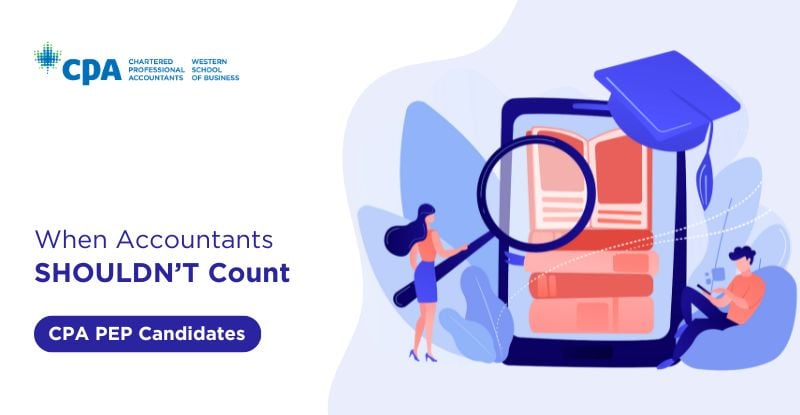
To contextualize this, I will summarize a few instances that have recently come up on the discussion boards where I think candidates should perhaps focus their attention elsewhere.
Accountants shouldn’t count when…
“Requireds” in a Practice Case (PC)
Note, I say “Requireds,” not Assessment Opportunities (aka “AOs"). This is intentional because when we write cases, we address users and their needs (that is, the cases’ required elements).Conversely, when markers assess a case response, they mark it according to AOs. Why are they not the same? Well, AOs are typically created after a case is written as a method of assessment. While these AOs will likely follow the same separation as a Required, there are a few instances where they are different:
The breadth and/or depth of the response
When the response becomes too lengthy, CPA Canada may decide to split the quantitative and qualitative elements of one Required into two AOs. However, there does not appear to be clear guidance as to when this happens, as there may be two “shorter” AOs and one “longer” AO.
Actually, there are two Requireds within one Required
Though it may not seem that way, consider the issues of audit weaknesses and process improvements. These could be communicated to candidates as a user requiring help identifying and fixing audit weaknesses. Yet, there may be two distinct issues here (i.e., 1 – identifying and communicating audit issues, and 2 – providing a reasonable recommendation to address the identified weaknesses).
Certain Strategic or Enabling AOs
In a legacy program, these may be referred to as “pervasive indicators,” and really, they are a large part of what being a CPA is about identifying a material issue that you identify via several “clues” throughout the case using your professional judgment. For example, several fraud indicators may suggest that Ishita comes in early to receive the inventory deliveries, Ishita is very helpful and never takes a vacation; there is a discrepancy in the auditor’s inventory versus the company’s inventory. As a CPA, we should be able to look at these individual case facts, take a “step back,” and discuss the possibility that Ishita could be committing fraud through the misappropriation of inventory assets.
What to do instead?
I suggest reviewing these tips for better case writing, a post about case-writing balance, and writing PCs in exam-like conditions.You can also consider employing practical tactics and time-saving tips tailored for CPA PEP candidates.
I get it – we all want to put in effort, find an edge that somehow guarantees success. Like in life, there are no absolute guarantees in CPA PEP. However, there is one thing I can assure you: If we capture those small, incremental improvements and work with focused intensity, blocking out distractions, we can significantly increase our chances of success.
Do you have feedback on this post or a question you’d like answered by an experienced CPAWSB educator? Please contact your facilitator or send a question to the General Topic in the Candidate Discussion forum.

Samantha Taylor, PME, CPA, CA
Samantha Taylor, PME, CPA, CA, is an educator and lead policy advisor for CPAWSB and a Senior Instructor of accounting at Dalhousie University. She is on a mission to understand and enable learner efficacy while eliminating doldrums occasionally associated with accounting education. Read more of Sam’s posts at the CPAWSB blog.



